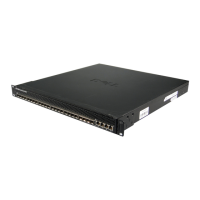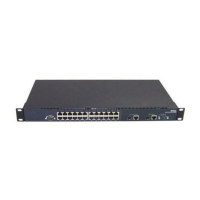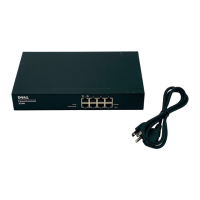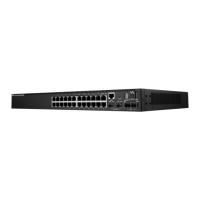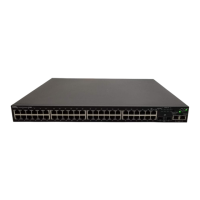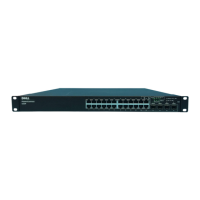PowerConnect B-Series FCX Web Management Interface User Guide 103
53-1002268-01
Configuring an Ethernet port
4
The Ethernet Port Configuration display contains the following information.
Port The slot ID and port ID.
Actual Speed/Mode Shows whether the Actual speed matches the Configured speed. If the Configured
speed is set to Auto, then the speed is provided.
Configured Speed/Mode The speed duplex set for the port.
QOS Shows the setting (1-7) for Quality of Service.
Lock Addr Shows whether a Lock Address is Enabled or Disabled.
Tag Indicates whether the ports have VLAN tagging. The value is Yes or No.
STP Shows whether STP is Enabled or Disabled for the port.
Fast STP Shows whether Fast STP is Enabled or Disabled for the port.
Fast Uplink Shows whether Fast Uplink is Enabled or Disabled for the port.
Flow Ctrl Shows whether the ability to monitor flow control packets is Enabled or Disabled.
Gig Default The globally configured Gigabit negotiation mode is the default mode for all Gigabit
fiber ports. You can override the globally configured default and set individual ports
to the following:
• Negotiate-full-auto – The port first tries to perform a handshake with the other
port to exchange capability information. If the other port does not respond to
the handshake attempt, the port uses the manually configured configuration
information (or the defaults if an administrator has not set the information).
This is the default.
• Auto-Gigabit – The port tries to perform a handshake with the other port to
exchange capability information.
• Negotiation-off – The port does not try to perform a handshake. Instead, the
port uses configuration information manually configured by an administrator.
Ethernet Port Attribute Allows you to monitor the port attributes.
Ethernet Port Statistic Allows you to monitor the Ethernet port statistic details.
Ethernet Port Utilization Allows you to monitor the Ethernet port utilization details.
Relative Utilization Allows you to configure the uplink and downlink port members.
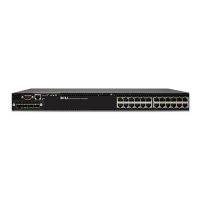
